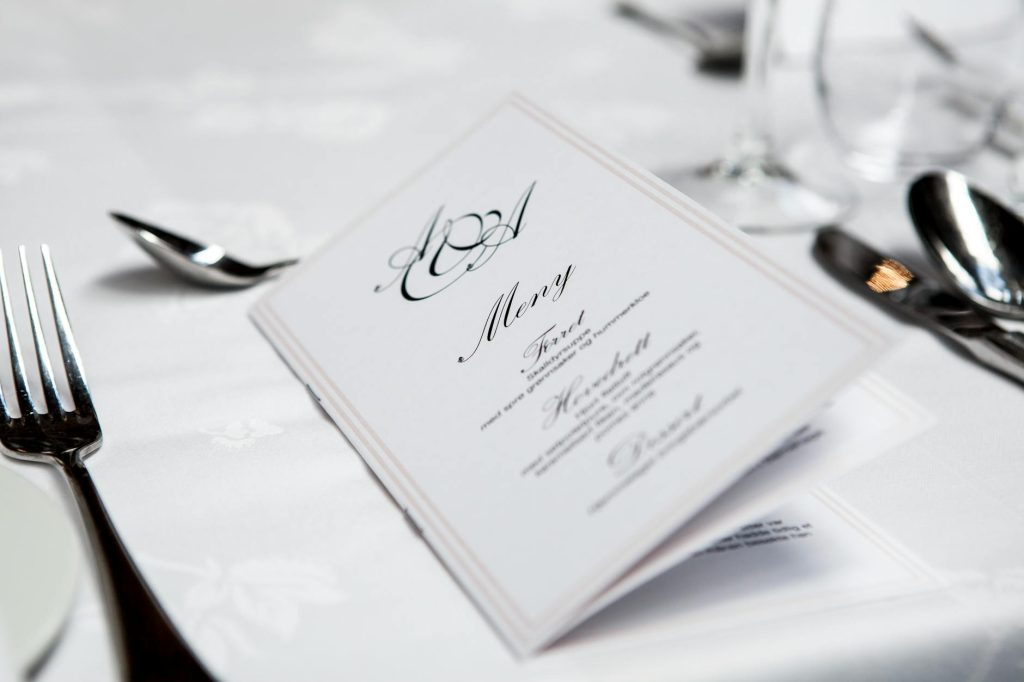I was sipping an icy Presidente one blistering Tuesday in El Seibo when the waiter slid a handwritten menu across my table. Four stark words stared back: Mondongo, Chenchén, Buche y Pata, Chimichurri Dominicano. My Spanish was already solid—four years in the Dominican Republic had seen to that—yet I felt as if the board had been scribbled in code. I assumed chimichurri meant steak sauce, guessed y pata must involve chicken feet, and had no earthly clue about chenchén. Ramón, the Dominican buddy nursing a Malta by my side, flashed a grin and began translating line by line. Goat tripe stew. Cracked‐corn pilaf cooked in coconut milk. Pig snout and foot braised until gelatinous. A burger, not a condiment. I ordered half a portion of everything and spent the rest of the meal alternating between mild panic and wide-eyed delight.
That chalkboard encounter became the spark for this essay. A decade of island living—and plenty of weekend hops across to Colombia—has turned reading menus into a daily language lesson, an anthropology workshop, and sometimes even a comedy routine. What follows is not a tidy checklist but the winding path that led me from confusion to confidence, peppered with the words, conversations, and “watch-out” moments that matter most when an expat tries to eat like a local.
The Menu as Story, Not a Shopping List
Dominican cooks rarely cling to standardized recipes. If the catch is fresh, sancocho de pescado appears; if not, yesterday’s beef bones morph into asopao with rice and cilantro. Handwritten boards and chalk smudges therefore read more like daily diaries than permanent signs. In Santo Domingo’s colmados I learned to scan for salty scribbles—an extra swirl of chalk often means a dish sold out at lunch and has been hastily replaced. Two hours west in San Juan de la Maguana, the same phenomenon happens with chenchén: supply dries up, the board stays put, and the cook simply shouts, “¡Hoy no hay, mi amor!” before suggesting a mound of white rice instead.
Colombian eateries share that improvisational spirit but swap coconut milk for mountain herbs or Andean potatoes. In Medellín, the cook might nix bandeja paisa on a rainy afternoon when the plantains aren’t ripening fast enough. You still see the name chalked up—part of local pride—but the waitress will casually steer you to sobrebarriga al horno or a lighter ajiaco. The lesson is universal: read the menu for context, then confirm aloud.
A Table for Translating Dominican Menus
Early on, I started jotting translations inside the flap of my wallet. It soon grew into the cheat-sheet below—still pocket-sized, still coffee-stained, and still saving me from uninvited surprises.
| Dominican Menu Term | How Locals Say It | What Arrives on Your Plate |
|---|---|---|
| Mondongo | mon-DON-go | Cow-tripe soup thick with cilantro and bitter orange |
| Chivo Guisado Liniero | CHEE-vo gwee-SAH-do lee-NYEH-ro | Northwest-style spicy goat, marinated for a day |
| Concón | kon-KON | Crispy rice scraped from the pot bottom |
| Guandules | gwan-DOO-les | Pigeon peas, sautéed into rice (moro) |
| Habichuelas con Dulce | ah-bee-CHWAY-las | Sweet bean dessert with cinnamon and coconut milk |
| Yaniqueque | yah-nee-KEH-keh | Fried dough disc, salty or sweet |
| Buche y Pata | BOO-cheh ee PAH-ta | Pig snout and feet, long-braised |
| Chenchén | chen-CHEN | Cracked-corn pilaf simmered in coconut milk |
| Pica Pollo | pee-kah PO-yo | Dominican-Chinese fried-chicken shack |
A Back-Porch Dialogue in Cabrera
The day I finally ordered buche y pata without stuttering, I found myself on a breezy veranda facing the Atlantic. Below is almost word for word how that exchange unfolded.
| Español Dominicano | English Sense |
|---|---|
| Yo: Hermano, nunca he probado buche y pata. ¿Qué parte del cerdo es exactamente? | Me: My friend, I’ve never tried buche y pata. Which part of the pig is that, exactly? |
| Camarero: Es la trompa y las paticas, bien limpias, guisadas con orégano y ají cubanela. Queda suave, casi gelatinosa. | Waiter: It’s the snout and little feet, well cleaned, stewed with oregano and cubanela pepper. Comes out tender, almost gelatinous. |
| Yo: ¿Y lo sirven con arroz o con chenchén? | Me: And do you serve it with rice or with chenchén? |
| Camarero: Como usted prefiera. Hoy tenemos chenchén fresco con coco. | Waiter: However you like. Today we’re offering fresh chenchén cooked in coconut milk. |
| Yo: Entonces tráeme media ración para probar. Si me gusta, repito. | Me: Then bring me half a portion to try. If I like it, I’ll get more. |
Fifteen slow bites later, the gelatinous texture made perfect sense—think pork belly meets bone broth. I ordered seconds.
Crossing the Mona Passage to Colombia
Colombia, with its Andes, coasts, and Amazonian fringe, layers vocabulary on vocabulary. A Bogotá chalkboard whispering sobrebarriga left me clueless the first time. A Cartagena vendor advertising posta negra tricked me into thinking fish was on offer; in reality it was molasses-braised beef. Over the years, the pattern became clear: the same Spanish root rarely points to the same part of the animal, spice level, or cooking method.
The next chart captures the Colombian words that trip up even veteran expats.
| Colombian Menu Term | Where You’ll See It First | Dish in Practice |
|---|---|---|
| Bandeja Paisa | Medellín and Antioquia | Heaping platter: beans, rice, fried egg, chicharrón, ground beef, plantain, avocado, tiny arepa |
| Ajiaco | Bogotá’s cold plateau | Thick potato-chicken soup perfumed with guasca herb |
| Hormiga Culona | Santander | Roasted “big-bottomed” queen ants, crunchy and nutty |
| Cazuela de Mariscos | Caribbean coast | Creamy coconut milk seafood stew |
| Sobrebarriga | Nation-wide | Flank steak slow-braised with tomato and onion |
| Arepa de Choclo | Coffee Region | Sweet corn pancake stuffed with cheese |
| Sancocho de Gallina | Valle del Cauca | Hen stew with green plantain, yucca, cilantro |
A Medellín Fonda Scene
One rainy night in the Laureles neighborhood I flagged down a waiter wearing a Medellín jersey. The aroma in the dining room hinted at six hours of slow roasting.
| Español Paisa | English Sense |
|---|---|
| Yo: Oye, parcero, la sobrebarriga suena brutal, pero no sé qué corte es. | Me: Hey mate, the sobrebarriga sounds amazing, but I’m not sure which cut of beef that is. |
| Mesero: Es falda, hermano. La horneamos ocho horas con cebolla y tomate. Se deshace sola. | Waiter: It’s flank, brother. We bake it eight hours with onion and tomato. It falls apart. |
| Yo: ¿La sirven con papa criolla? | Me: Do you serve it with those little yellow potatoes? |
| Mesero: Claro, y aguacate al lado. | Waiter: Absolutely, and avocado on the side. |
The tension melted. So did the beef.
When One Word Means Two Very Different Things
Nothing highlights regional nuance better than ordering a chimichurri in Santo Domingo and receiving a dripping street burger instead of a parsley-garlic steak sauce. Dominican Spanish borrowed the word for its famous chimichurris—griddle-smashed patties smothered in secret pink sauce. Meanwhile, Colombian chefs stay loyal to the original Argentine condiment. Likewise, a Dominican empanada is wheat-flour dough puffed in oil, whereas a coastal Colombian empanada shows up as a cornmeal pocket with potato inside and a peanut-laced ají on the side. Context is everything—and the only reliable clue is the map in your head.
Ingredient Words That Slip Past Textbooks
Casual menus rarely mention individual flavors, yet one herb can define an entire region. Dominican stews lean on ají gustoso, a fragrant pepper that smells fiery but tastes sweet; Colombian soups come alive with guasca, an Andean herb absent from island markets. The table below pairs words with culinary identities rather than dictionary definitions.
| Spanish Term | Country of First Encounter | Closest English Anchor | Kitchen Role |
|---|---|---|---|
| Ají Gustoso / Ají Dulce | Dominican Republic | Sweet mini-pepper | Body of most stews and rice dishes |
| Recaito / Sazón | Dominican Republic | Cilantro-pepper-garlic mash | Island equivalent of sofrito |
| Guasca | Colombia | Galinsoga herb | Earthy backbone of ajiaco |
| Ñame | Both | Yam / taro cousin | Thickens sancocho, lends starch |
| Arracacha | Colombia | White carrot | Sweet-peppery note in mountain stews |
| Culantro | Both | Long-leaf cilantro | Punchier than regular cilantro |
Little Rituals That Keep Surprises Pleasant
Every confident menu session begins the same way for me. I look the waiter in the eye and ask how the kitchen prepares a dish “aquí, en esta casa.” Those five words unlock details no chalkboard can capture. If I think I know the ingredient? Still ask. One evening I assumed longaniza would resemble mild Spanish chorizo. The Dominican version nearly blew sparks out of my ears, stuffed as it was with Scotch bonnet and sour orange. A simple ¿Pica mucho?—does it pack heat?—would have saved my palate.
Another quiet routine involves arriving early when street stalls first heat their oil. Fresh batches mean less cross-flavor contamination, and vendors love showing off spotless pans. Curiosity turns into camaraderie; camaraderie turns into bigger samples. By the time the lunch rush floods in, you’re the familiar face who already knows the lay of the land.
Equally important is remembering that chalkboards lie by omission rather than intention. If moro de guandules has been wiped out, a Dominican cook will pivot to white rice without changing the board. It is not deceit—it is island pragmatism. Confirm with a quick ¿Todavía tienen…? before committing.
A Final Spoonful of Habichuelas con Dulce
Back on that roadside patio in El Seibo, after Ramón finished decoding the menu, I ordered the goat, the corn pilaf, and yes, the pig snout. The cook emerged from the kitchen holding a small bowl of warm, dusky‐pink dessert. “Para que pruebes algo dulce,” she said, sliding it to me with a wink. It was habichuelas con dulce, a sweet bean pudding I’d written off as odd until that moment. The cinnamon floated on coconut, the raisins bobbed like small boats, and the cream drizzled across the top turned each spoonful into a lullaby.
When the waitress collected our plates, she offered one last slice of advice: “El menú es un cuento; si lo lees completo, entiendes la historia.” The menu is a story; read it start to finish, and you’ll grasp the plot.
That counsel has served me ever since, whether squinting at sun-bleached boards in a Dominican mountain town or scanning sea-sprayed chalk in Cartagena. Every unfamiliar word is an invitation—an entry point into family recipes, regional pride, and dialects that never make the textbooks. Accept the invitation. Ask the next question. Taste the next mystery. And if your first spoonful feels strange? Smile, thank the cook, and tell them you’ve just learned a new chapter of the story.
Buen provecho, mi gente. Que no se les queme el concón.Tools










